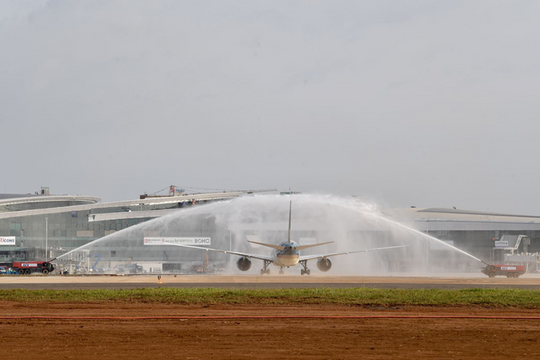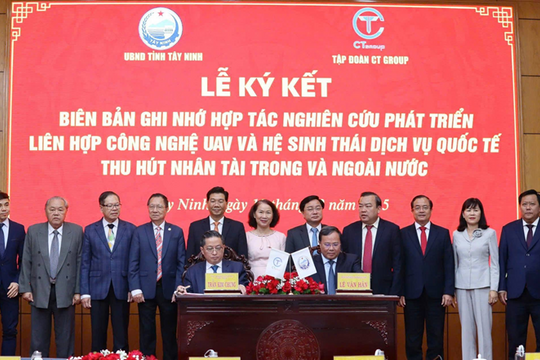India has long been known as the cradle of Buddhism, where the relics and sacred sites of the Buddha's life are most abundantly preserved. From a different perspective, this place is also the origin of pilgrimage tourism, encapsulated in the term "Four Holy Sites" - a collective name associated with four significant locations marking four major events in the life of the Buddha. These sites have now become famous and familiar to millions of pilgrims from around the world.
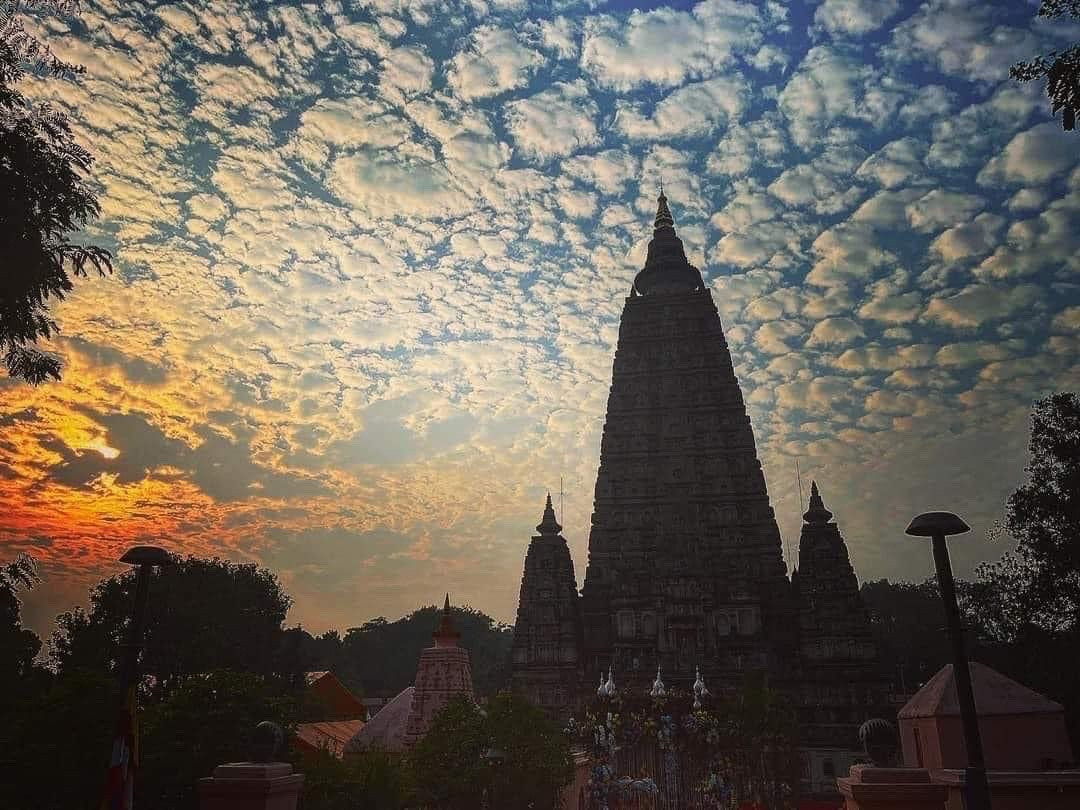
The Lumbini Garden, where the Buddha was born – a name carrying the meaning of the Buddha’s birth mission to bring joy to all beings, where humanity is the subject of spiritual cultivation, goodness, and enlightenment".
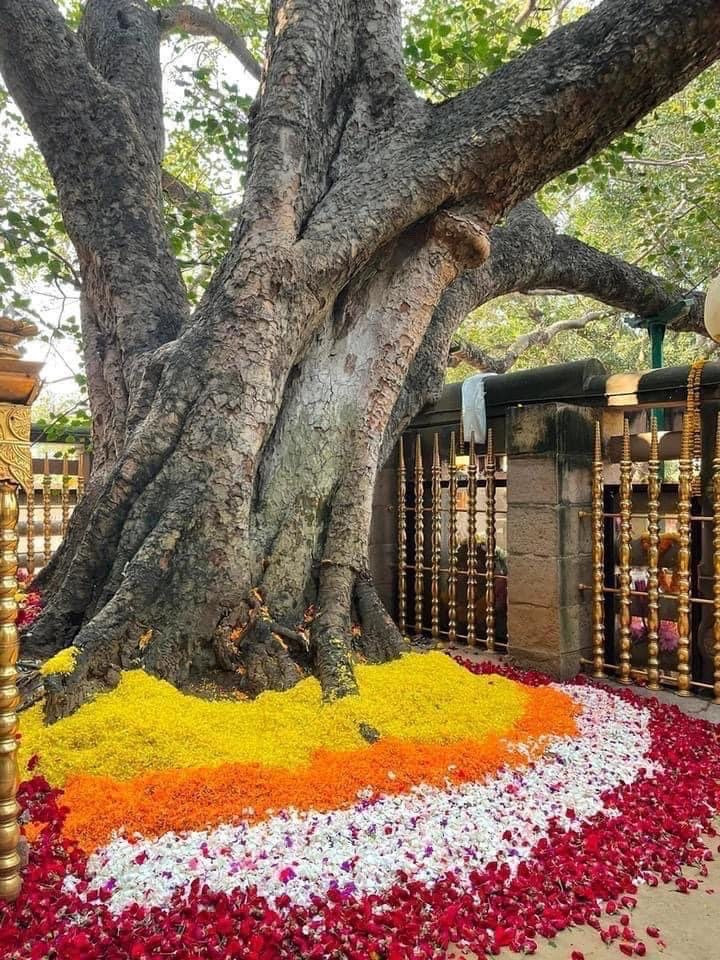
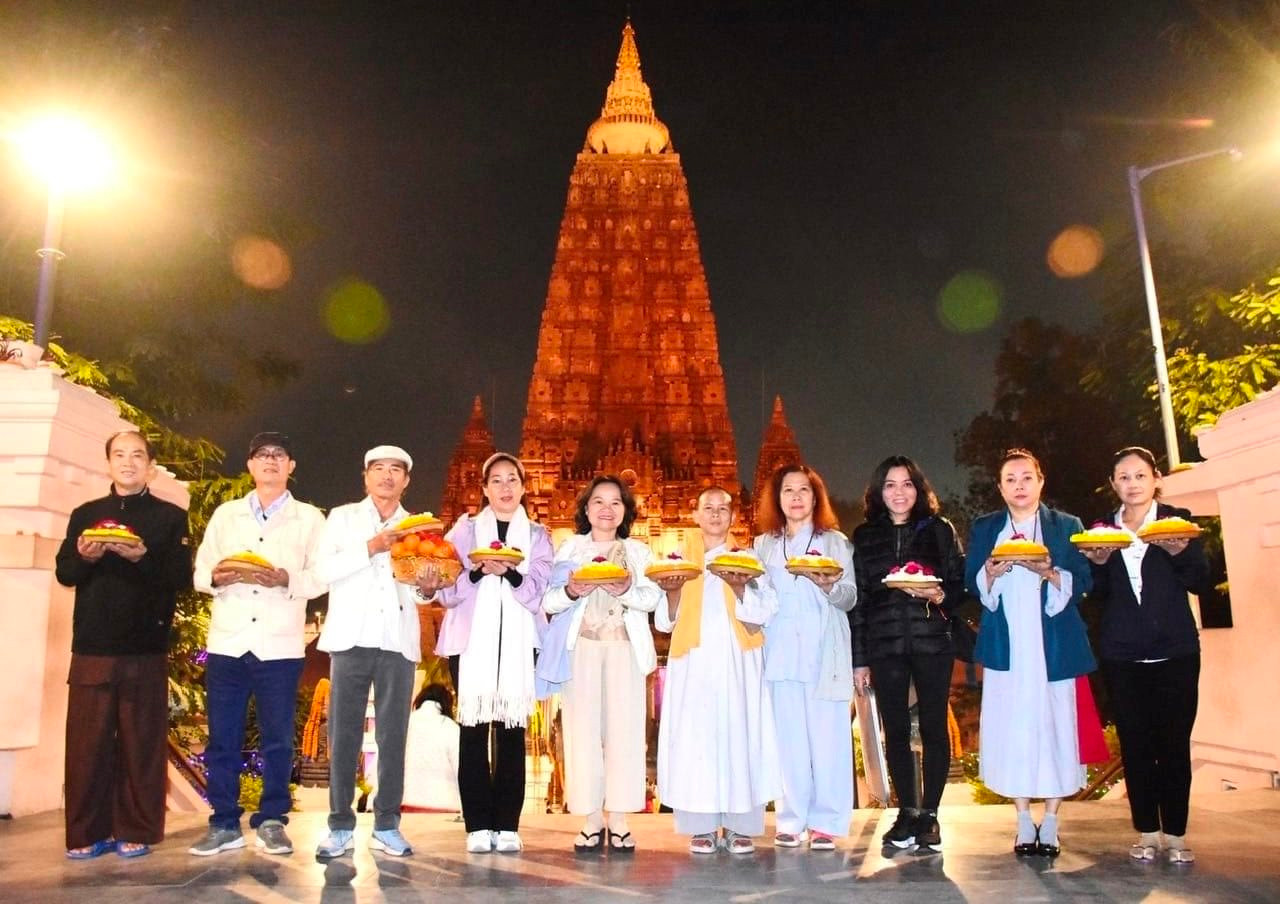
.jpg)
The first place we set foot in was Bodh Gaya, a small town situated in the southeastern state of Bihar, where the Buddha attained enlightenment. This place has welcomed millions of pilgrims to Bodh Gaya. It is home to the Bodhi tree and impressive relics such as the Great Stupa, the Diamond Throne (Vajirasana) located under the Bodhi tree, and the site where the Crown Prince meditated. Additionally, the Mahabodhi Statue, believed to closely resemble the form of the Buddha, is placed in the Mahabodhi Temple. Visitors can also admire the Lotus Pond and the meditation spots where the Buddha sat after attaining enlightenment.
Bodh Gaya, where the Buddha attained enlightenment, is recognized as a place of "awakening," where faith, love, and compassion in the realm of existence transcend the darkness, and liberated beings find release.
Bodh Gaya, the first image that appeared before us was an ancient, majestic tower, situated in a low-lying landscape with tiers leading towards the tower. Each step felt gentle, tranquil, blending seamlessly with the sounds of Pali chants and accompanying music, creating an indescribable atmosphere in the nearly 5-hectare space. While individuals may experience varied emotions upon arriving, a common perception emerges – a sense of the sacred, a colorful aura permeating this entire space.
Our accommodation was arranged near Bodh Gaya, and we frequented the area multiple times. Besides participating in Buddhist ceremonies with fellow members, offering incense, flowers, prayers, or lighting Mandala lamps for wisdom, peace, and blessings, and exploring the surroundings for photography, I often spent time sitting behind the tower, facing west towards the Bodhi tree. Under the lush and cool foliage, a spacious area housed monks, nuns, and devotees engaged in meditation, prayer, and contemplation of the Buddha. It was truly a miraculous and deeply devout atmosphere surrounding the sacred Bodhi tree.
I listened, observed, and was greatly surprised by the resonant sounds in the Tibetan Buddhist chanting style. It was peculiar – the singing technique involves only the chest voice, more precisely, utilizing the larynx and the lower part of the lungs, with complete abdominal breathing. Remarkably, there was almost no movement of the mouth, no opening, yet the sound was amplified to an unimaginable extent – deep, powerful, reverberating, clear, as if the sound originated from deep within the abdominal cavity. Truly unusual and fascinating. I hope that on my next visit, I will delve deeper into understanding this technique.
A friend in the group confided, "Every year, I come on a pilgrimage to this place, and each time, I am filled with emotions, experiencing a sense of peace, reverence, and gratitude. It seems like there is a spiritual force, an invisible energy at the site of the Buddha's enlightenment that influences my body, mind, and every step I take…". For our group of artists, the first visit to this place felt truly special. Experiencing and feeling the vibrations or transformations in each person's heart and soul through the stories and performances of Buddhist music, as expressed by Venerable Huyen Dieu, brought joy and fulfillment.
We visited Venerable Huyen Dieu at the Vietnam Bouddha Bhumi Vihara in India. This temple, the first Vietnamese temple in India, was built by Venerable Huyen Dieu in 1987, nearly four decades ago. The architectural style of the temple is Vietnamese, designed by architect Nguyen Ba Lang. Here, we participated in Buddhist ceremonies, toured the temple, experienced tranquility, and enjoyed delicious, warm, and heartfelt vegetarian meals.
Our group had the honor of having a tea session with Venerable Huyen Dieu, where he shared valuable insights about Buddhism and life. Venerable Huyen Dieu presented each of us with valuable books and a lucky coin brought from Nepal.
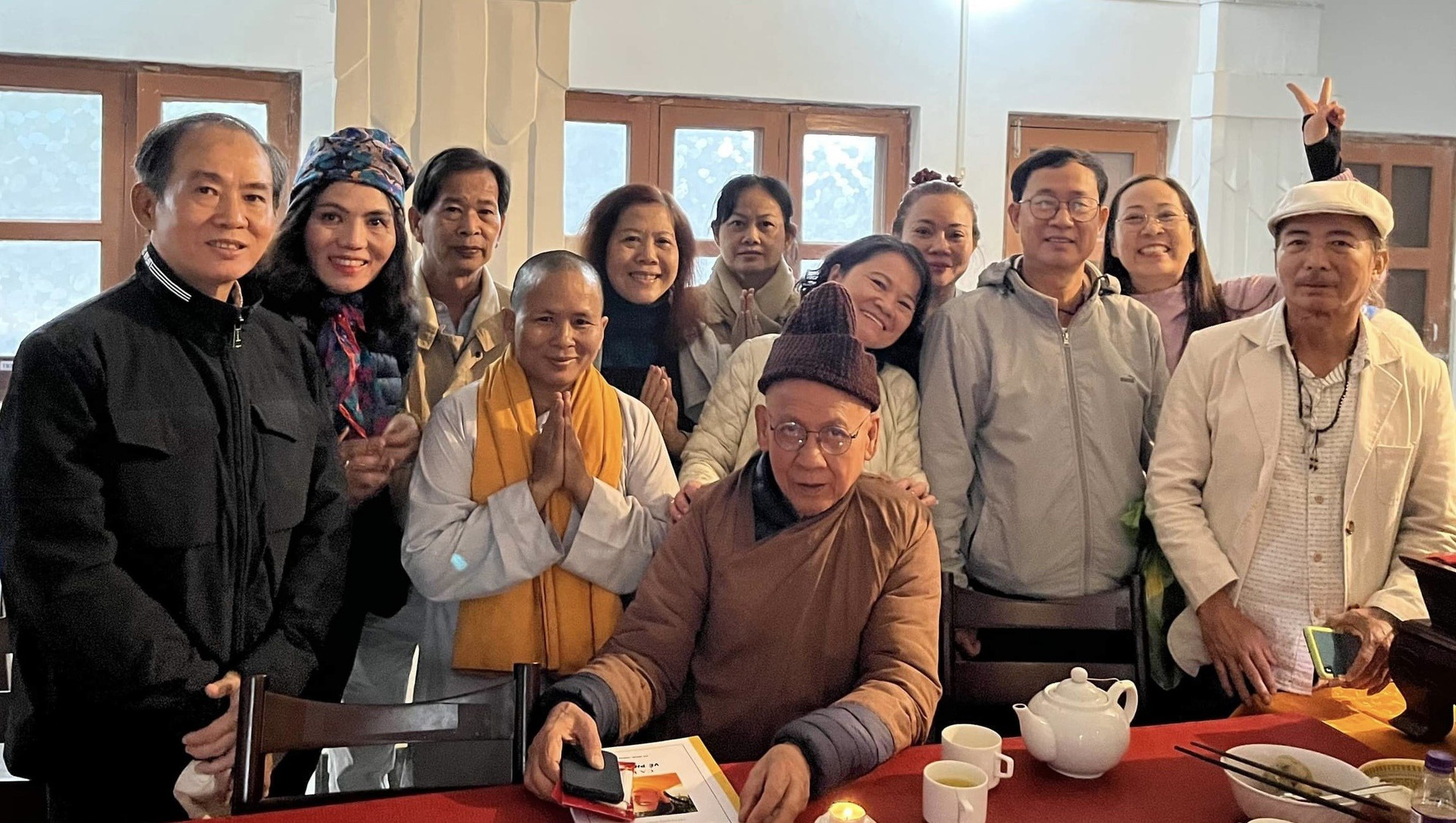
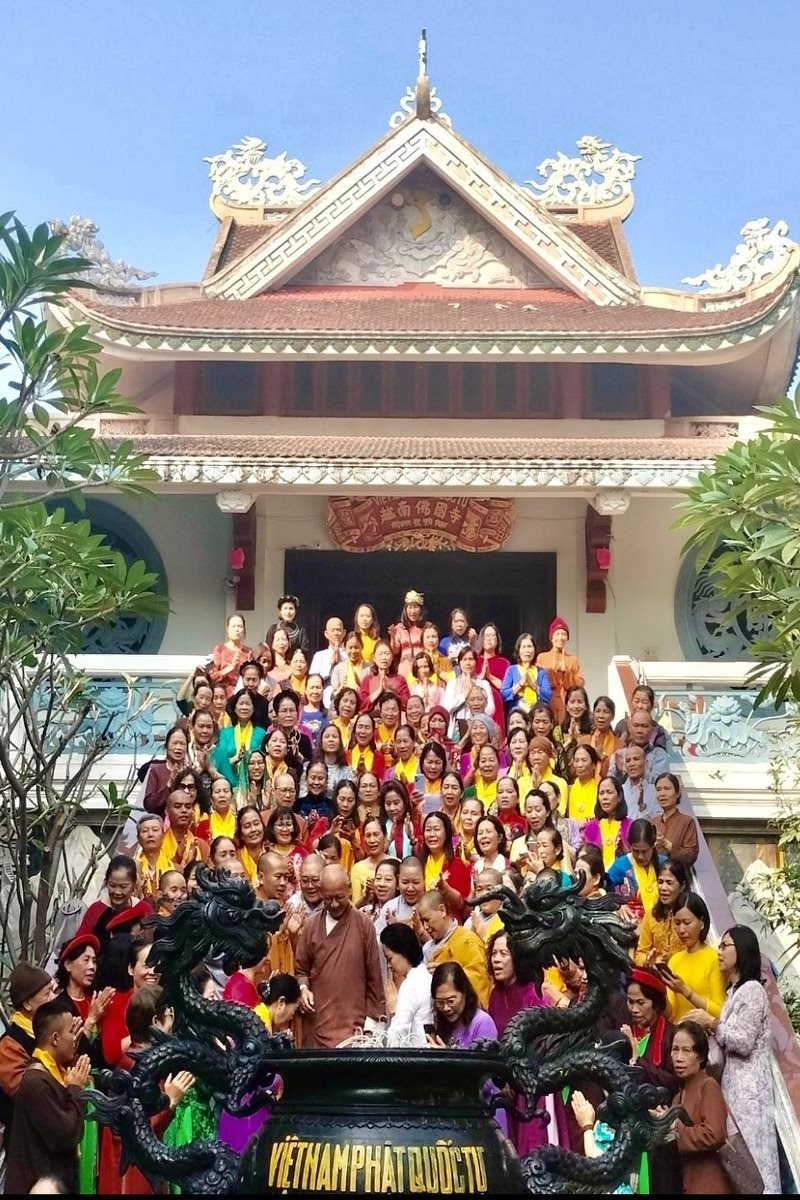
A “home-grown” cultural evening was organized to express gratitude to Venerable Huyen Dieu, attended by a large gathering of devoted Buddhists. Although brief, the event was warm and heartfelt. I remember that evening when we were invited by Venerable Huyen Dieu to the rooftop to enjoy tea, cakes, preserves, and witness a beautiful fireworks display welcoming the New Year.
The following day, we joined Venerable Huyen Dieu, along with many monks and devotees, on a journey of approximately 280 km to the city of Varanasi – the cradle of Buddhism and Hinduism, where the mystical Ganges River awaited. We stayed overnight in Varanasi. At 5:30 a.m. the next morning, our group gathered again, boarded a boat, and set out to explore the Ganges in the chilly weather. Shrouded in dense fog were rows of ancient streets along the riverbank, resembling moss-covered fortress walls echoing with the chanting of prayers, creating a mysterious painting. Venerable Huyen Dieu guided and shared sacred stories of the Ganges, recounting events that unfolded on both its spiritual and tangible shores. It was a glimpse into customs, beliefs, and a unique culture preserved over more than 4000 years. We were deeply moved, silent, and offered our prayers.
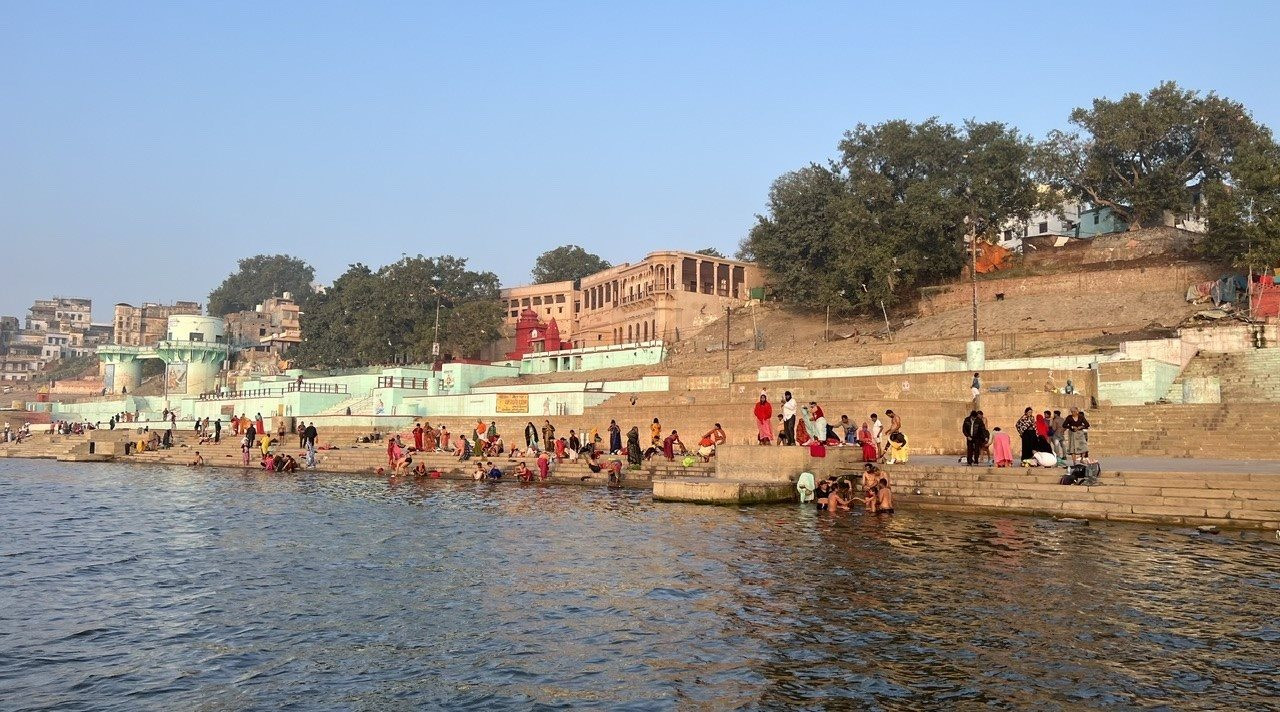
.jpg)
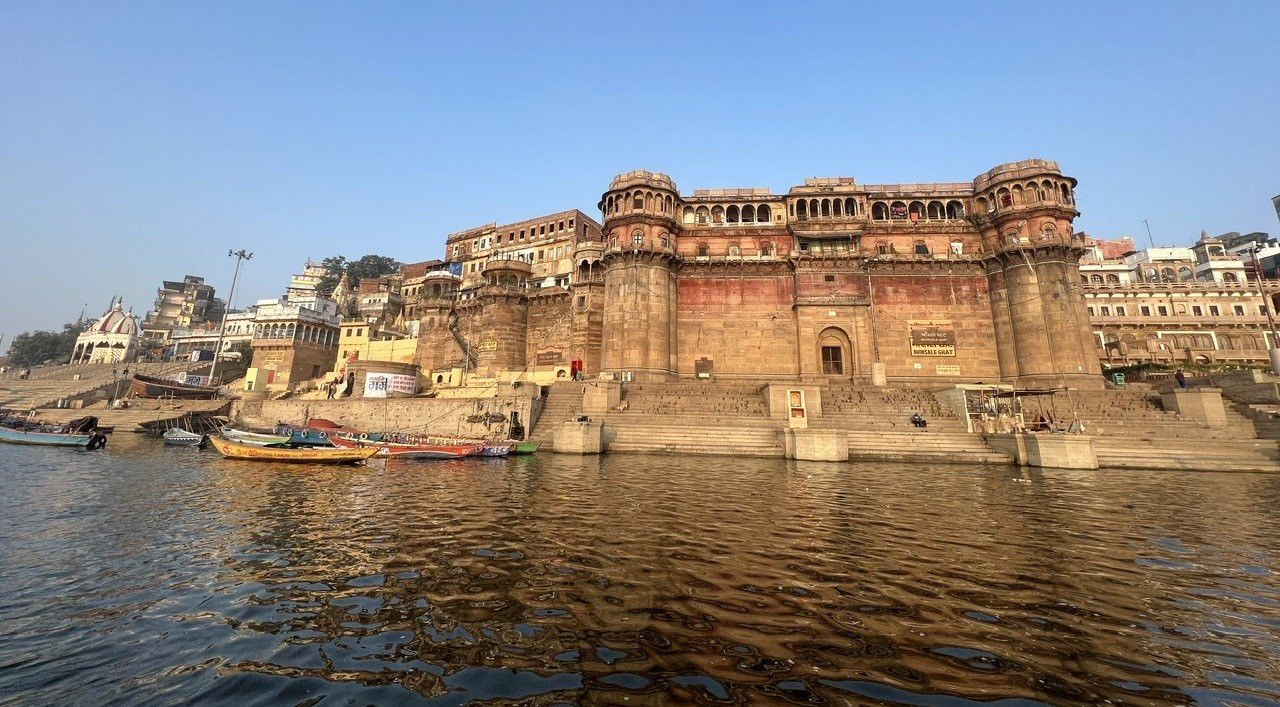
As the sun rises, the city along the river appears brighter, distinct, and resolute, with various contrasting hues. This city, since ancient times, has nurtured scholars, academicians, philosophers, poets, and renowned musicians who have significantly influenced the development and prosperity of India. The Ganges River remains of paramount importance as the focal point in all religious, cultural, and historical endeavors in India.
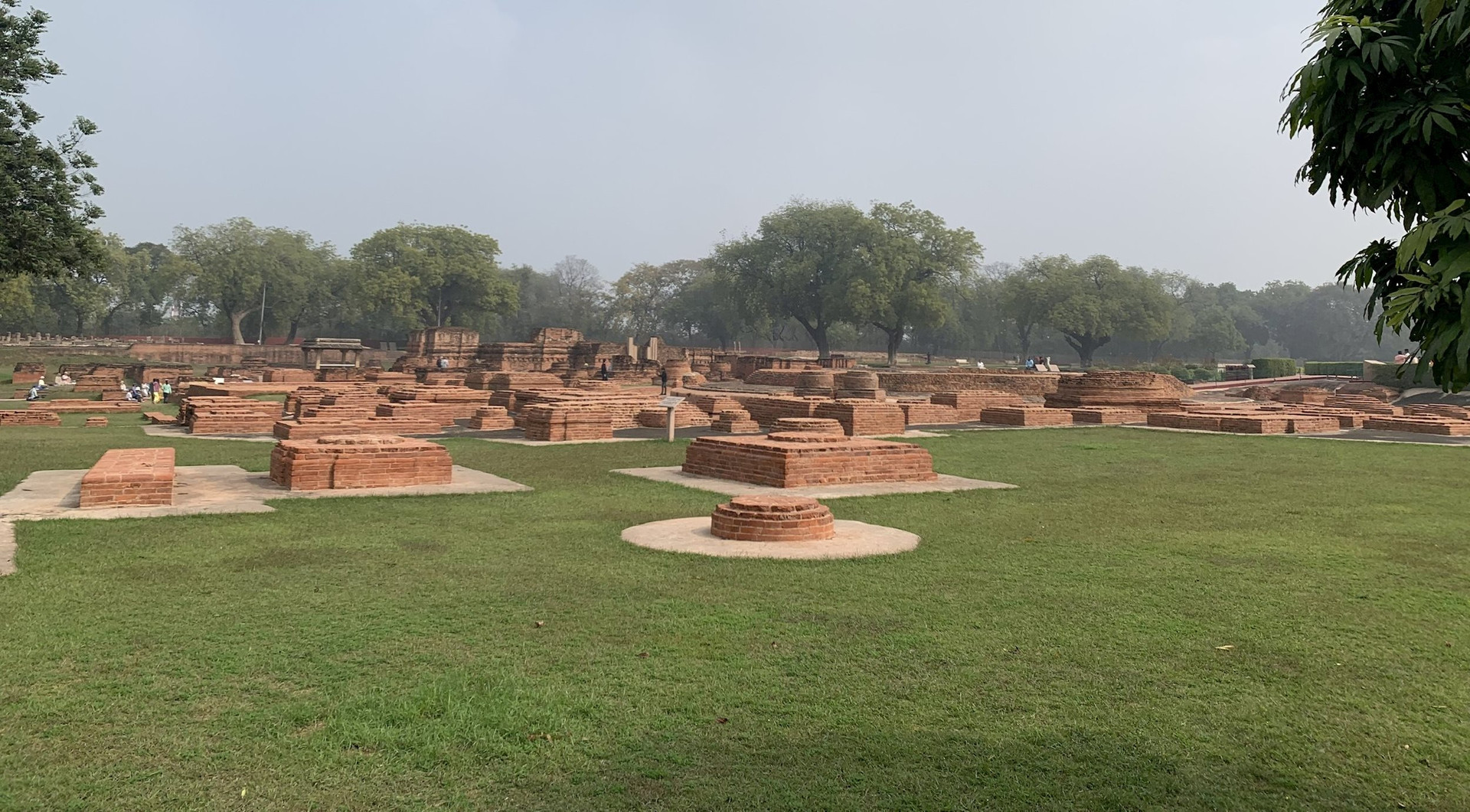
At our next destination, our group visited Lumbini, the site where the Buddha delivered his first sermon to the five ascetics, including the Kieu Tran Nhu brothers. The remnants of Dharmarajika Stupa, Dhamekh Stupa, King Ashoka's stone pillar, and a Bodhi tree branch from the original Bodhi tree are still present. Here, we gathered around Venerable Huyen Dieu to hear the tales of the 60 enlightened monks who traveled far and wide to disseminate the teachings of Buddhism, ultimately attaining Arhatship.
Lumbini, also known as Sarnath, is a beautiful garden where the Buddha first preached to his "spiritual companions in suffering," including the Kieu Tran Nhu brothers. According to history, this tranquil garden became an ideal residence for monks advancing in their spiritual journey.
In this serene garden, adjacent to the Dhamekh Stupa, Venerable Huyen Dieu performed the Triple Gem Refuge ceremony for some members of our artists' group.
.jpg)

Kushinagar, the place where the Buddha entered Parinirvana. His earthly mission was fulfilled. It can be said that the event of the Buddha's Parinirvana, while leaving lingering emotions and nostalgia for the human realm, from a dialectical perspective, this event, through the Buddha's life journey, has transformed into shining points, radiant beacons crystallized in the consciousness of many, passed down through generations until today.
After a vegetarian lunch, we, along with venerable monks, nuns, and devotees, bid farewell to Venerable Huyen Dieu as he returned to Bodh Gaya. Thay embarked on a journey to the airport, flying to Germany, where the Buddhist Academy awaited with important tasks and many monks, nuns, and devotees eagerly awaited his arrival. With a warm and compassionate smile, a dignified demeanor, and a sense of ease in every step, Venerable Huyen Dieu, dressed in his well-worn brown robe, walked away. His image and reflections are etched in each of us.
Pilgrimage on the land of Buddha. We embark on this journey to witness and feel the religious relics and artifacts, whether driven by religious purposes or simply seeking spirituality. The spiritual aspect aids us, fellow artists, in discovering specific materials and values on the path of composing and performing Buddhist music, guided by the essence shared and named by Venerable Huyen Dieu for our music group "Peaceful Joy."
We express our gratitude for the companionship of Thuy Huong, who has sown auspicious connections and led us to the land of Buddha. We also appreciate the enthusiasm of Sister Buu Lieu, who prepared special and unforgettable Vietnamese vegetarian meals for us...
Thanks to everyone for this journey, which has helped me gain clarity and... realize many things (...). Wishing fellow musicians to receive abundant energy from the sacred land of Buddha, enabling them to continue their journey with their next beautiful plans.


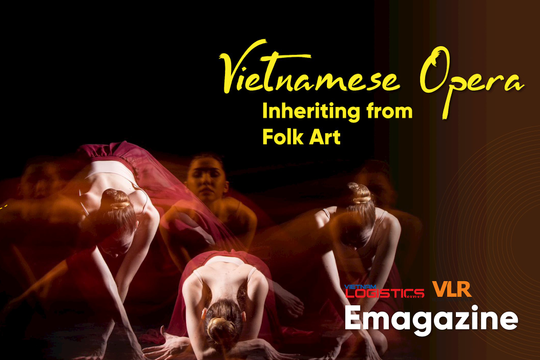
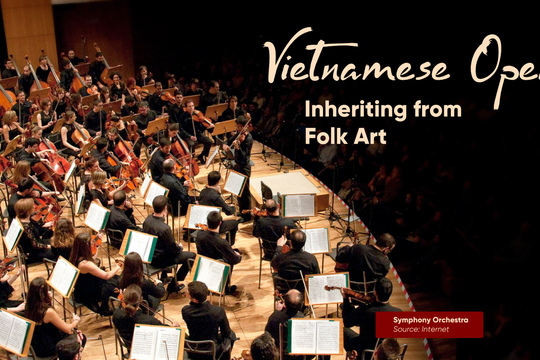



.png)

.png)
.png)



.png)
